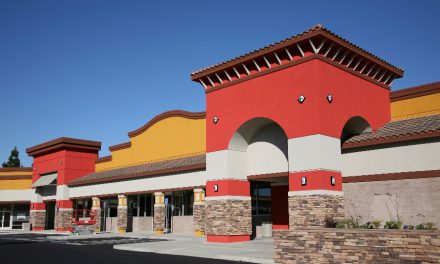The level of vacant property present in a region is a barometer for the local housing market. When vacancies drop, the pressure on buyers and renters inevitably rises.
Residential vacancies have two categories, divided into:
- homeowner vacancies; and
- rental property vacancies.
California’s total vacancy rate — including second and investment homes — is 9% as of 2020. In comparison, the national vacancy rate was nearly 10%. Thus, of the 14.38 million homes in California, nearly 1.25 million are vacant. Considering California’s constant and desperate need for housing, the fact that 1.25 million homes are sitting vacant at any given time is a head scratcher.
However, the vacancy rate includes homes vacant and on the market, second homes, seasonal homes, and investment homes. Thus, the vacancy rate does not correspond with what commercial property professionals refer to as the availability rate.
More specifically, the average rental vacancy rate in California declined to 3.8% in Q1 2022, below the historic average of roughly 5.5%. California’s low rental vacancy rate is partially due to the continuing impacts from the pandemic’s eviction moratorium, which allowed financially distressed tenants to remain in place despite their inability to pay.
In Q1 2022, California’s homeowner vacancy rate fell to 0.5%, its lowest level in recent memory, according to the U.S. Census Bureau.
Other states joining California with low vacancy rates are Colorado, Massachusetts, New Jersey, Connecticut, Washington, and Oregon. These are mostly coastal states, with the exception of Colorado. They all have something in common — high housing costs. Each state falls within the top 20 states with the highest cost of living, according to World Population Review.
Low vacancy rates flag areas in need of construction
Low vacancy rates are a sign that more residential construction is needed. In other words, there is a supply-and-demand imbalance, clear in California’s low for-sale inventory and reduced residential construction. Without sufficient construction to meet demand, housing prices will continue to rise beyond the pace of incomes — bad for the homeownership rate, and bad for agents whose incomes rely on a stable level of transaction fees.
One solution for today’s problem of insufficient construction is loosening zoning regulations.
Tight zoning discourages crucial change, resulting in:
- a lack of construction starts;
- further instability due to supply-and-demand imbalances;
- inflated prices; and
- low homeownership rates.
Tight zoning does not curb demand, but turns a blind eye to it. Here in California, demand is snowballing. In areas which sell and rent well, builders naturally build to take advantage and profit from high demand — but government regulations often hold back this progress, tying builders’ hands.
The biggest examples of restrictive zoning which curb the creation of significant housing are in areas where prices are already high. San Francisco and Los Angeles are areas where housing inventory falls below demand. High costs and restrictive zoning have worked together to increase prices. Less costly inland areas benefit from fewer zoning restrictions, and in turn, its residents are rewarded with lower housing costs.
Loosening zoning regulations is the force which can bring balance to a plethora of problems in the real estate market. Less restrictive rules allow for growth in high demand, low vacancy areas in need of more housing. Real estate professionals have a stake in changing zoning regulations and development in their local communities. It is imperative to get involved, which can include:
- attending council meetings;
- discussing the need for zoning changes with other professionals; and
- showing support for progressive zoning reform.
Go out and use your voice for change by getting involved with your local government. You may be the change needed in the real estate industry.















California’s chronic housing shortage won’t be solved until elected officials develop and demonstrate the political will and courage to actually solve it. Real solutions require radically reducing the regulatory regime, beginning with CEQA, and providing reasonable assurances to the public and developers that any development project designed in consistency with that jurisdiction’s General Plan will be permitted for construction in a year or less.
The current regulatory regime has given rise to cottage industries that encourage and create costly impediments to new supply while enriching the lawyers and activists leading the charge against new development. Proof of the problem is found in the actions taken since 2019 by the state legislature, under the guise of responding to the Governor’s declaration of a “Housing Crisis” by making it easier to build more houses faster and at lower cost.
Contrary to the fanfare surrounding SB330 and related legislation, the only significant result has been the undesirable densification of existing urban and suburban residential neighborhoods with ADUs and lot splits. The ultimate result will be a negligible rise in housing supply, but a significant negative impact on existing residential environments and lifestyles. As a consequence, the most potent political impediment to new housing supply and affordability, “nimbyism”, will intensify.
Until CA’s political leaders at the state and local levels develop the courage to make bold changes in favor of renters and homebuyers, substantive and measurable solutions to the state’s chronic housing shortage and lack of affordability will continue to elude us.